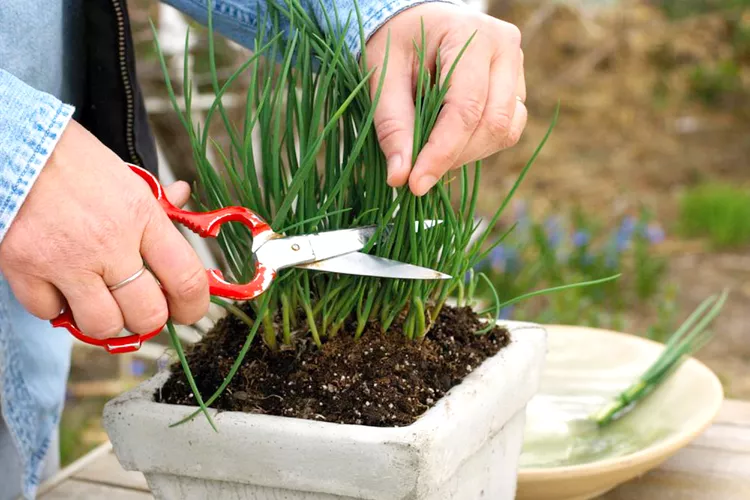Chive plants are loved for their bright, oniony flavor and pinkish-purple edible flowers that make colorful salad toppers and garnishes. Growing this culinary herb is simple, but knowing how to harvest chives correctly will help keep your plants productive and healthy for many years to come. Use the harvesting tips in this guide to boost the growth of your chive plants and enjoy the freshest-tasting chives for your favorite recipes.
When to Harvest Chives
Chives are easygoing, edible plants that can be harvested throughout the season as cut-and-come-again herbs, or they can be gathered in larger quantities for freezing or drying.
Chive plants that are grown from seed are usually ready to harvest about 60 days after planting or when plants are about 6 inches tall. But if you’re in a rush, you can also grow chives from nursery grown plants and start harvesting fresh chives about 30 days after transplanting.
Small quantities of chive leaves can be harvested as needed from spring through fall. If you live in a warm area or grow chives indoors, you can harvest chives in winter too. But in order to get your hands on chive flowers, you’ll need to wait for plants to bloom and pick the flowers as soon as they appear in late spring or early summer.
Larger harvests of chives can be taken throughout the year as well, but it’s best to wait a few weeks in between harvests to give your plants some time to recover. First year chive plants can be harvested 3 to 4 times a year, but older and more established plants can be harvested about once
a month. Many growers take a large harvest of chives immediately after the plants flower and again in fall before a hard frost damages tender chive leaves.
How to Harvest Chives
If you just need a few chives for cooking, harvest the older, outer leaves around the exterior of the plant using your fingertips or a pair of scissors. Chives will grow better and look tidier in herb gardens if you clip leaves off about 1 to 2 inches above the soil line. Chive flowers can be harvested in the same way by cutting the woody flower stalks off at the soil line.
Larger quantities of chives can also be harvested by hand or with scissors or garden pruners. To start, gather the leaves you need in one hand and then cut them off 1 to 2 inches above the base of the plant. If you don’t have scissors handy, you can also twist chive leaves off the plant with a flick of your wrist, but make sure you don’t accidentally pull the plant from the ground.
Regularly harvesting chive plants from your garden will reduce yellow leaves and stimulate new growth, but don’t overdo it. And remember, chive leaves don’t last long in the fridge, so it’s best to harvest only what you plan to use right away.
For easy harvesting, loosely fasten a rubber band around the base of your chives before cutting to create a tidy bundle of chives.
How to Store Chives
After harvesting chives, make sure you store them properly so they last as long as possible. To avoid wilted leaves, bring fresh chives indoors immediately after harvesting. Then pick out any yellow or wilted stems and use the remaining leaves as soon as you can.
If you harvest more leaves than you need for cooking, store extra chives in the fridge in a glass filled with about one inch of water and refresh the water daily. You can also wrap chive leaves in a damp paper towel and store them in a re-sealable plastic bag in your crisper drawer. When properly stored, chives should stay fresh for about 7 to 14 days.
If you’d like to store your chive harvest even longer, you can dehydrate fresh chives using a food dehydrator and store leaves in an airtight container in your pantry. Or you can wrap chive leaves tightly in an airtight baggie and store them whole in the freezer or chop them into bits and freeze them in ice cube trays with oil or water.




















